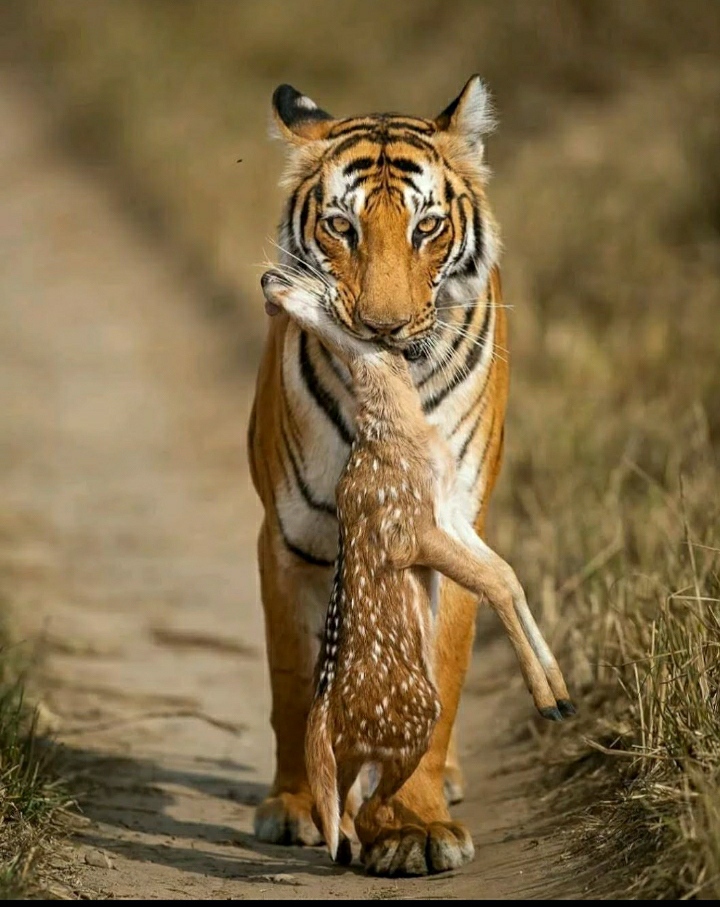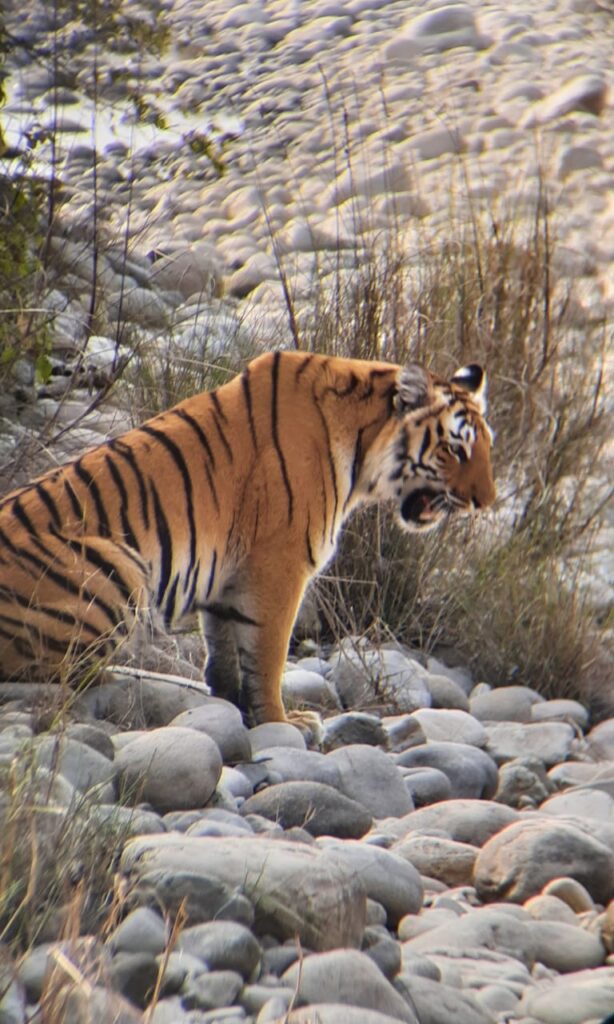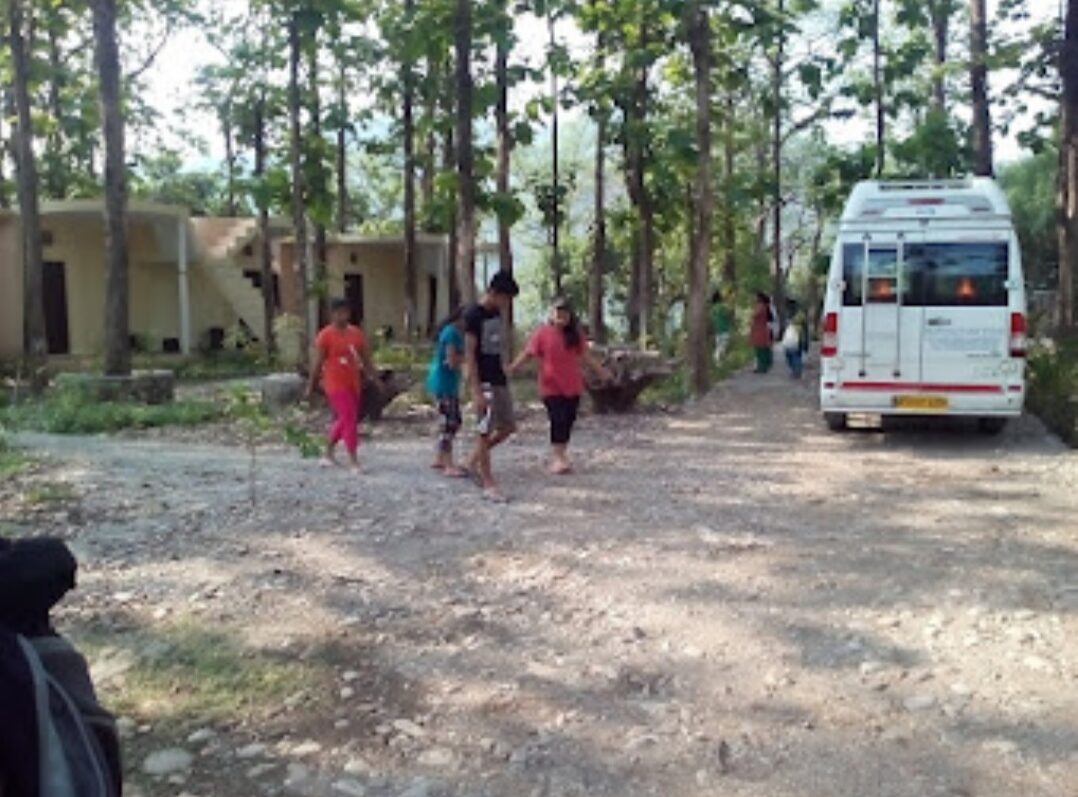1. Introduction to Mohan Jim Corbett Park and its Tiger Population
The Mohan Jim Corbett Park, located in the majestic landscape of India, is renowned for its diverse wildlife and, in particular, its thriving population of tigers. These majestic creatures have long captivated our imagination and played a vital role in maintaining the ecological balance of the park. However, the social dynamics of tigers within this protected area have been undergoing notable shifts in recent years. This article aims to delve into the mysteries surrounding these shifting social dynamics, exploring the historical background and factors influencing these changes. By understanding these dynamics, we can gain valuable insights into the conservation efforts required to ensure the long-term survival of tigers and the preservation of their unique social behaviors in Mohan Jim Corbett Park.
1. Introduction to Mohan Jim Corbett Park and its Tiger Population
1.1 Overview of Mohan Jim Corbett Park
Welcome to Mohan Jim Corbett Park, a stunning wildlife sanctuary located in the heart of India. Spanning over acres of lush greenery and diverse habitats, this park is not only a haven for wildlife enthusiasts but also holds great significance for the conservation of the majestic tiger species.
1.2 Importance of Tigers in the Park
Tigers are the crown jewels of Mohan Jim Corbett Park, symbolizing its rich biodiversity and playing a crucial ecological role. As apex predators, they help maintain a balance in the park’s ecosystem by regulating prey populations and preventing overgrazing. Moreover, these magnificent creatures contribute to the park’s allure, drawing tourists from all over the world who marvel at their beauty and strength.
2. Exploring the Historical Social Dynamics of Tigers in the Park
2.1 Early Observations of Tiger Social Behavior
Early on, researchers observed fascinating social behavior among the tigers of Mohan Jim Corbett Park. Contrary to popular belief that tigers are solitary animals, they found evidence of social interactions and cooperation between individuals. Tigers were observed engaging in communal grooming, sharing kills, and even forming temporary alliances during territorial disputes.
2.2 Patterns of Social Interactions among Tigers
Further studies revealed distinct patterns in tiger social interactions. Male tigers, known for their territorial nature, establish and defend their territories, often engaging in fierce battles with rivals. Females, on the other hand, showed a more flexible approach, overlapping territories with other females to facilitate cooperative hunting and protect their cubs.
3. Factors Influencing the Shifting Social Dynamics of Tigers
3.1 Changes in Prey Availability
One factor reshaping the social dynamics of tigers in the park is the availability of prey. Shifts in prey populations can lead to increased competition among tigers, with more frequent encounters between individuals. This can result in changes to their social behavior, as they adapt to new hunting strategies and territorial boundaries to secure their food source.
3.2 Impact of Habitat Loss and Fragmentation
Habitat loss and fragmentation pose significant challenges to tiger social dynamics. As human activities encroach upon their natural habitats, tigers’ territories become smaller and more fragmented. This limits their movement and reduces opportunities for interactions, potentially leading to decreased social behavior and increased isolation among individuals.
3.3 Effect of Climate Change on Tiger Behavior
Climate change also plays a role in the shifting social dynamics of tigers. Rising temperatures and unpredictable weather patterns can disrupt traditional migration routes and alter prey distribution. Tigers may be forced to adapt their behavior, such as adjusting their hunting patterns or expanding their territories, which in turn impacts their social interactions with other tigers.
4. Understanding the Role of Territoriality in Tiger Social Interactions
4.1 Significance of Territorial Marking and Defense
Territoriality is a fundamental aspect of tiger social interactions. Tigers mark their territories using scent markings and vocalizations, signaling their presence and defending their boundaries. Territory marking serves as a communication tool, establishing social hierarchies and minimizing physical confrontations between tigers.
4.2 Intruder Response and Social Hierarchy among Tigers
When confronted by intruders, resident tigers display various response mechanisms. Dominant individuals may engage in aggressive displays to protect their territories, while subordinate tigers tend to adopt submissive postures to avoid conflicts. These social hierarchies among tigers play a vital role in maintaining order and minimizing violence within the park.
So, there you have it – the mysteries behind the shifting social dynamics of tigers in Mohan Jim Corbett Park unveiled. As we continue to study and understand these fascinating creatures, it is crucial to ensure their conservation to protect not only their social interactions but also the delicate balance of their habitat.<h2>5. Implications of Changing Social Dynamics on Tiger Conservation Efforts</h2>
Tigers are not just magnificent creatures; they are also crucial for our planet’s biodiversity. The shifting social dynamics among tigers in the Mohan Jim Corbett Park have significant implications for tiger conservation efforts. Let’s take a closer look at two key challenges that arise from these changes.
5.1 Challenges for Genetic Diversity and Population Viability
With the changing social dynamics, there is a risk of reduced genetic diversity within tiger populations. Inbreeding becomes more likely when tigers are unable to find suitable mates due to altered social structures. This can lead to decreased fitness and increased vulnerability to diseases and other environmental pressures. Conservationists must find ways to maintain genetic diversity to ensure the long-term viability of tiger populations.
5.2 Impact on Breeding Success and Cub Survival
The changes in social dynamics can also affect breeding success and cub survival rates. If dominant males are disrupted or displaced, it may lead to a decline in successful mating opportunities. Additionally, disturbances in social structures can cause increased conflicts and aggression, potentially endangering the survival of tiger cubs. Protecting and supporting stable social dynamics among tigers is crucial for the future generations of this endangered species.
6. Studying the Impact of Human Interference on Tiger Social Behavior
Human activities have a profound influence on tiger social behavior, further complicating conservation efforts. Let’s explore two key aspects of human interference and their impact.
6.1 Human-Wildlife Conflict and Disruptions in Social Dynamics
As human populations expand, conflicts between humans and tigers escalate. Encroachment into tiger habitats leads to disruptions in social dynamics, as tigers are forced to adapt to changing landscapes. The loss of territory and resources can trigger aggressive behavior or displacement of tigers, altering their social interactions. Addressing human-wildlife conflict is paramount for maintaining stable social dynamics among tigers.
6.2 Influence of Tourism and Poaching on Tiger Social Behavior
Tourism, while an essential source of revenue for conservation, can impact tiger social behavior. Increased human presence and disturbance can lead to changes in social structures and patterns of movement. Additionally, the illegal wildlife trade and poaching activities directly target tigers, further destabilizing their social dynamics. Striking a balance between responsible tourism and rigorous anti-poaching efforts is vital to support healthy tiger communities.
7. Conservation Strategies to Maintain Stable Social Dynamics in Tiger Populations
Preserving stable social dynamics among tigers is a crucial aspect of tiger conservation. Here are two key strategies to achieve this goal.
7.1 Protected Area Management and Conservation Policies
Effectively managing protected areas and implementing conservation policies play a pivotal role in maintaining stable tiger social dynamics. By preserving and restoring tiger habitats, ensuring sufficient prey populations, and minimizing human disturbances, we can create an environment conducive to healthy social interactions among tigers.
7.2 Promoting Landscape Connectivity for Genetic Exchange
Promoting landscape connectivity is essential for facilitating genetic exchange among tiger populations. Creating corridors and interconnected habitats enable tigers to disperse, find mates, and maintain genetic diversity. Collaborative efforts between conservation organizations, governments, and local communities are vital to establish and protect such landscape connectivity.
8. Future Outlook: Predicting and Managing Social Dynamics for Tiger Conservation
Looking ahead, predicting and managing social dynamics will be crucial for effective tiger conservation. Here are two key factors to consider.
8.1 Advancements in Technology for Monitoring Tiger Social Interactions


Advancements in technology, such as camera traps and GPS tracking, allow researchers to monitor tiger social interactions more accurately. By gathering data on behavior, territorial patterns, and social dynamics, conservationists can gain insights into the changes occurring within tiger populations. This knowledge enables the development of informed conservation strategies to mitigate negative impacts.
8.2 Adaptive Management Approaches for Long-term Conservation Success
Adaptive management approaches, which involve actively adjusting strategies based on new information and feedback, are vital for long-term conservation success. By continuously assessing the effectiveness of conservation efforts and adapting management strategies, we can respond to changing social dynamics and ensure the preservation of tigers for future generations.
As we unravel the mysteries behind the shifting social dynamics of tigers in Mohan Jim Corbett Park, it is clear that concerted efforts are needed to protect and sustain these majestic creatures. By addressing challenges, studying human interference, implementing conservation strategies, and adopting adaptive management approaches, we can work towards a future where tigers roam freely, their social dynamics firmly intact.In conclusion, unraveling the mysteries behind the shifting social dynamics of tigers in Mohan Jim Corbett Park is not only a fascinating endeavor but also crucial for the conservation and protection of these magnificent creatures. By studying the historical patterns, understanding the factors influencing change, and implementing effective conservation strategies, we can strive towards maintaining stable social dynamics within the tiger population. It is through this dedicated effort that we can ensure the long-term survival of tigers in their natural habitat and continue to marvel at their remarkable social interactions. Together, let us work towards safeguarding the future of tigers in Mohan Jim Corbett Park and beyond.
1. Why is studying the social dynamics of tigers in Mohan Jim Corbett Park important?
Understanding the social dynamics of tigers in Mohan Jim Corbett Park is crucial for their conservation. By studying their behavior and interactions, we can develop effective strategies to protect their habitats, manage human-wildlife conflicts, and ensure the long-term survival of this iconic species.
2. What factors contribute to the shifting social dynamics of tigers in the park?
Several factors influence the shifting social dynamics of tigers in Mohan Jim Corbett Park. These include changes in prey availability, habitat loss and fragmentation, climate change, human interference such as tourism and poaching, and the impact of human-wildlife conflicts.
3. How do shifting social dynamics affect tiger conservation efforts?
Shifting social dynamics can have significant implications for tiger conservation efforts. Changes in social interactions can impact breeding success, genetic diversity, and population viability. Understanding these dynamics helps conservationists formulate targeted strategies to mitigate any negative effects and maintain stable tiger populations.
4. What are some conservation strategies to maintain stable social dynamics among tigers?
Conservation strategies to maintain stable social dynamics among tigers include protected area management, implementing conservation policies, promoting landscape connectivity for genetic exchange, and adopting adaptive management approaches. These strategies aim to create suitable habitats and minimize human disturbances, allowing tigers to maintain natural social behaviors essential for their survival.


